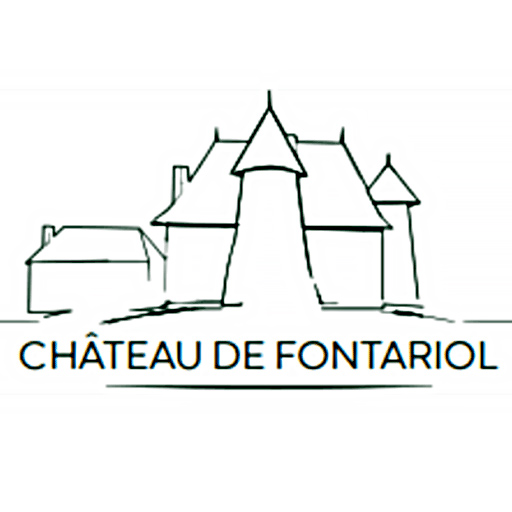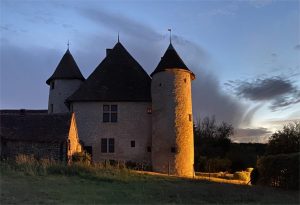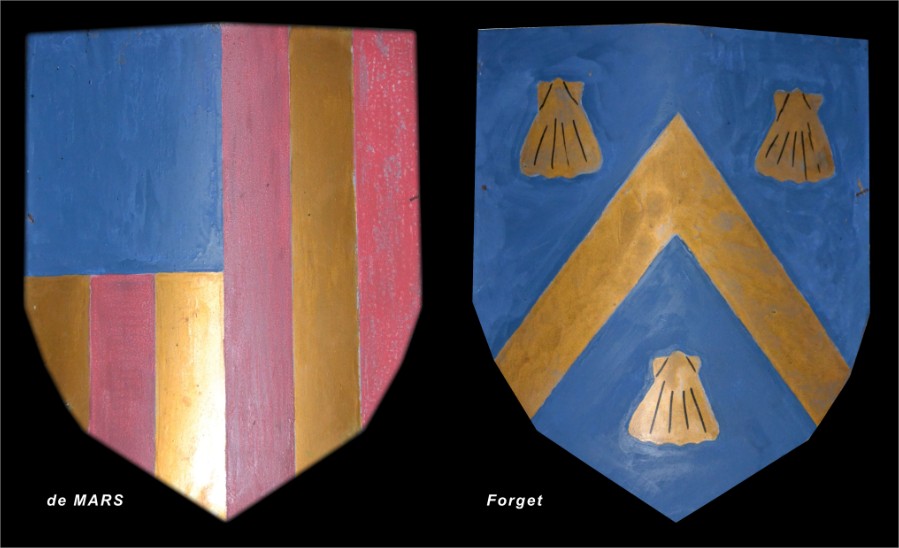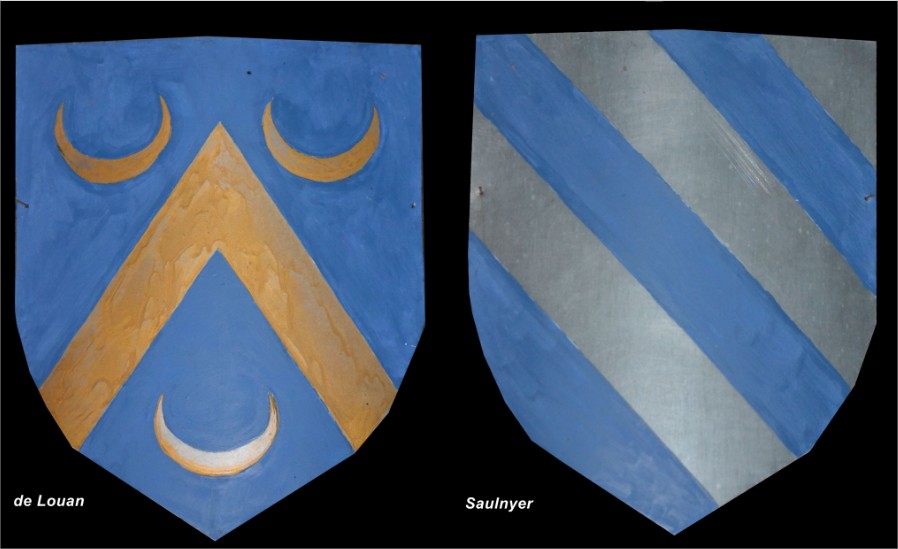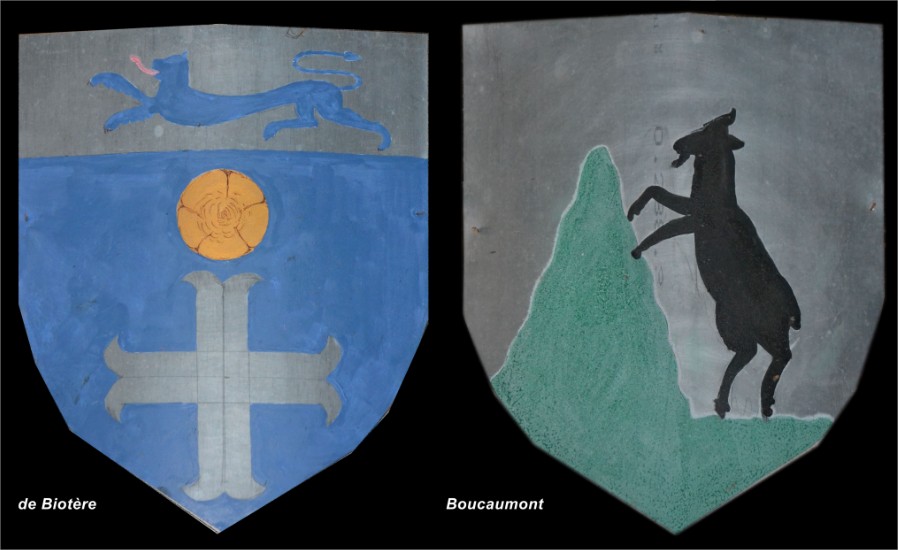History of Fontariol
Located in the commune of Le Theil in the Allier department, the Château de Fontariol belongs to a characteristic group of medieval defensive architecture in the Bourbonnais region. This architectural group consists of about thirty buildings whose construction responds to common imperatives. These are essentially constructions consisting of a quadrangular dwelling flanked on its main facade by a tower containing a spiral staircase and with one or more towers at the corners of the opposite facade. Another common element is that these constructions were erected over a period of about a hundred years, from the mid-15th century to the mid-16th century. It is in fact difficult to proceed with precise datings, other than stylistic ones, due to the lack of archives characterizing these châteaux.
Geographically, the château is situated at an altitude of 450 meters on the northern slope of a hill overlooking the road from Saint-Pourçain to Le Montet. This road follows the route of the ancient Roman road from Avaricum (Bourges) to Lugdunum (Lyon). Its dominant position gave Fontariol a controlling view of the road. To the south, the château is bordered by the Bois du Max woods, as already described in the 16th century. According to the first cadastral records dating from the 19th century, the château was surrounded by vast ponds following the contours of the hill. These natural moats, of which some water features still remain, could have constituted a defense from a military point of view but, above all, a reserve of food supplies.
The precise date of the château’s construction is unknown; it is believed to be due to a gentleman named Vigier, who seems to have held Fontariol around 1500. This seigneury was then part of the Châtellenie of Verneuil in Bourbonnais, on which it depended for justice. A small rural château, Fontariol was originally intended for domestic and agricultural use without, however, erasing its defensive aspects, although reduced and without any pretense of real effectiveness. These latter features are rather an expression of a desire to assert the social status of the builder, as evidenced by the towers, whose architectural utility is accompanied by the role of a symbol of a certain nobility. Thus, several families of officers of the Dukes of Bourbon succeeded one another at Fontariol.
XVe et XVIe centuries
The archives are lacking for a precise characterization of the origin of Fontariol as well as the identity of its owners. At best, one can estimate the construction of the manor around 1450, and one can hypothesize, based on the inventory of the Bourbonnais carried out in 1502 at the request of Anne de Bourbon, that the château described at that time as “a house surrounded by moats” was the property of… Mayet Vigier… unless it was Claude de Dreuil for “a house, mound, and lower courtyard.” It is impossible to conclude definitively at this time. Later, in 1569, Fontariol is mentioned in Nicolas de Nicolay’s work (General Description of the Bourbonnais) as “Fontériau, a fortified château adorned with a large wood”…
XVIe et XVIIe centuries
In 1574 François de Mars, Knight, who converted to Protestantism and served as Governor of the fortress of Bourg-en-Bresse for Francis I, was the owner of Fontariol. His daughter Antoinette brought Fontariol as a dowry to
Antoine Forget en 1602. Antoine Forget, Esquire, Secretary to the Duchess of Lorraine, and Antoinette de Mars had a son, Paul, around 1605. He became the Lord of Fontariol, La Quérie, La Molière, and Saint Romain in 1635. Paul Forget …was notably the First Captain of the King in the Lyonnais Regiment. The estate was then ceded by the descendants of the de Mars family to the de Louan family. Virtually no trace remains of any possible developments or transformations that the estate may have undergone during the 16th and 17th centuries; however, one can hypothesize that these were minor.
XVIIe et XVIIIe centuries
The conditions of the transfer of Fontariol to the de Louan family remain unknown, but it seems to have taken place around 1640. Indeed, in 1643… Claude de Louan, Esquire, Public Prosecutor in the justice system of Le Theil, was then the Lord of Fontariol. It would seem that the estate then passed, for a time, into the hands of the de Saulnyer family. These would be… François de Saulnyer, Esquire, around 1650, then Jean-Louis, his son, before returning to the de Louan family in 1688, or Pierre de Louan…, Lord of Persat, La Jolivette, and Le Plex, who then lived in Voussac at the Château de la Mothe (La Motte-Verger), acquired the fiefdom of Fontariol, perhaps following a seizure and auction. Fontariol was then rented to a farmer; Pierre de Louan granted a 6-year lease as a rental agreement to Pierre Gueston and his wife, a merchant farmer from Les Genevriers, for the fiefdom and House of Fontariol and its two dependent estates. The fiefdom returned in 1702 to the youngest of Pierre de Louan’s children, André, Esquire, Lord of Fontariol and L’Escure, and it also seems that the farming of the estates remained in the hands of the Gueston family until the 1730s, that is, for more than 40 years.
Of André de Louan‘s three children, it was Elisabeth Marguerite, the youngest daughter born in 1714, who received the fiefdom from her father and “paid homage and fealty” for Fontariol in 1760. Elisabeth de Louan de Fontariol occupied the château intermittently until 1775. During this period, several families of farmers succeeded one another in the exploitation of the agricultural estates. It is very likely that Elisabeth de Louan was responsible for the developments and transformations of the western part of the manor in the late 18th-century style, contrasting sharply with the eastern part, which remained in the Renaissance style with its lordly hall and mullioned windows.
In 1775, Elisabeth de Louan left Fontariol as a life annuity to her cousin Charles de Biotière de Chassincourt, Marquis de Tilly, Brigadier General of the King’s Armies under Louis XVI. The Marquis de Tilly only kept Fontariol for four years, as he sold the estate in 1779.
In 1779, Gilbert Joseph Boucaumont des Garennes“, Advocate in Parliament and Lieutenant in the Water Authority of Montmaraud,” acquired Fontariol from the Marquis de Tilly and “paid homage and fealty.” He died in 1784. The château, having been ceded to commoners, escaped the upheavals of the Revolution. In 1789… Jean Raccat, a winegrower in Bransat, owned the château, which was then occupied by his tenant farmer. He sold half of the château to the widow of Gilbert Boucaumont,
Antoinette Michelon and, in 1795 (8 Brumaire, Year IV of the French Revolutionary Calendar), the estate was precisely divided into two parts between Antoinette Michelon and the Raccat family. In 1799 (18 Brumaire, Year VIII), Antoinette Michelon owned all of Fontariol, and she gifted the right part to her daughter and the left part to her son. The latter then sold his share to a relative,
Gilbert Boucaumont-Rozières less than two years later in 1801.
From the 19th century to the present day:
During the 19th century and until the 1970s, the site became primarily a farm run by local notables. One part of the château remained in the Boucaumont family until its sale in 1968 to their former sharecropper who had become a tenant farmer. The other part was owned by the family
Meilheurat family (a Deputy of the Allier in 1837) from the beginning of the 19th century and was sold in 1964 to their sharecropper who had become a tenant farmer.
Upon its repurchase in 1987 by the Pince family, from the two farmers who then owned it, the estate was ruined and on the verge of collapse due to a lack of regular maintenance for many years. From that moment on, the château regained its unity and benefited from an exhaustive restoration thanks to the efforts of its owners. Listed on the Supplementary Inventory of Historical Monuments in 1989, the entire estate was classified as a Historical Monument in 2010. It was sold by Mr. Jacques Pince in 2018 to Carole and Christian Milla.
